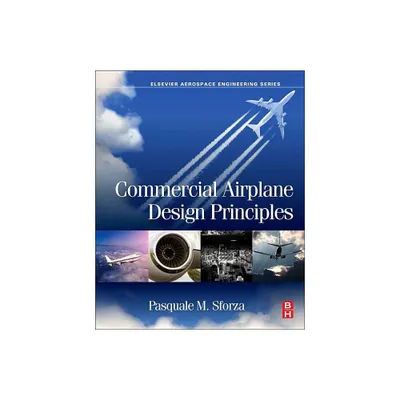Home
Design Principles of Ships and Marine Structures
Loading Inventory...
Barnes and Noble
Design Principles of Ships and Marine Structures
Current price: $61.99


Barnes and Noble
Design Principles of Ships and Marine Structures
Current price: $61.99
Loading Inventory...
Size: OS
*Product Information may vary - to confirm product availability, pricing, and additional information please contact Barnes and Noble
The Definitive Reference for Designers and Design Students
A solid grasp of the fundamentals of materials, along with a thorough understanding of load and design techniques, provides the components needed to complete a marine platform design.
Design Principles of Ships and Marine Structures
details every facet of ship design and design integration, and highlights the design aspects that must be put together to create an integrated whole product. This book discusses naval architecture and marine engineering applications and principles relevant to the design of various systems, examines advanced numerical techniques that can be applied to maritime design procedure at the concept design stage, and offers a comprehensive approach to the subject of ship design.
Covers the Entire Sphere of Marine Design
The book begins with an introduction to marine design and the marine environment, describing many of the marine products that are used for transportation, defense and the exploitation of marine resources. It also discusses stability issues relevant to ship design, as well as hydrodynamic aspects of resistance, propulsion, sea keeping and maneuvering, and their effects on design. In addition to covering the various systems and sub-systems that go into making a complex product to be used in maritime environment, the author explains engineering economics and its application in ship design, and provides examples wherever necessary.
Written by an author with more than 35 years of teaching experience, this book:
Describes various design methodologies such as sequential design process with the application of concurrent engineering and set based design factors in the use of computer-aided design techniques
Highlights the shape design methodology of ship forms and layout design principles
Considers design aspects relative to safety and risk assessment
Introduces the design for production aspects in marine product development
Discusses design principles for sustainability
Explains the principles of numerical optimization for decision-making
Design Principles of Ships and Marine Structures focuses on ship design efficiency, safety, sustainability, production, and management, and appeals to students and design professionals in the field of shipping, shipbuilding and offshore engineering.
A solid grasp of the fundamentals of materials, along with a thorough understanding of load and design techniques, provides the components needed to complete a marine platform design.
Design Principles of Ships and Marine Structures
details every facet of ship design and design integration, and highlights the design aspects that must be put together to create an integrated whole product. This book discusses naval architecture and marine engineering applications and principles relevant to the design of various systems, examines advanced numerical techniques that can be applied to maritime design procedure at the concept design stage, and offers a comprehensive approach to the subject of ship design.
Covers the Entire Sphere of Marine Design
The book begins with an introduction to marine design and the marine environment, describing many of the marine products that are used for transportation, defense and the exploitation of marine resources. It also discusses stability issues relevant to ship design, as well as hydrodynamic aspects of resistance, propulsion, sea keeping and maneuvering, and their effects on design. In addition to covering the various systems and sub-systems that go into making a complex product to be used in maritime environment, the author explains engineering economics and its application in ship design, and provides examples wherever necessary.
Written by an author with more than 35 years of teaching experience, this book:
Describes various design methodologies such as sequential design process with the application of concurrent engineering and set based design factors in the use of computer-aided design techniques
Highlights the shape design methodology of ship forms and layout design principles
Considers design aspects relative to safety and risk assessment
Introduces the design for production aspects in marine product development
Discusses design principles for sustainability
Explains the principles of numerical optimization for decision-making
Design Principles of Ships and Marine Structures focuses on ship design efficiency, safety, sustainability, production, and management, and appeals to students and design professionals in the field of shipping, shipbuilding and offshore engineering.


















